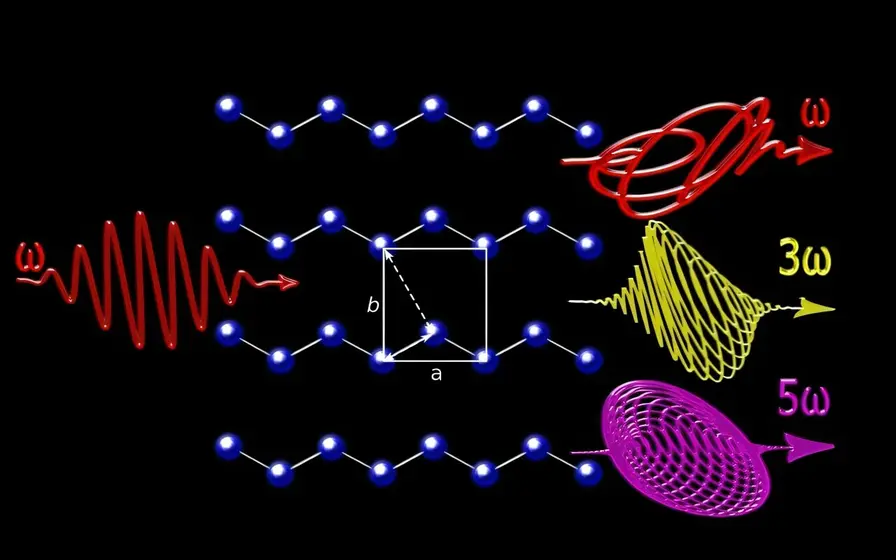T4K3.news
Nonsymmorphic symmetry shapes light in nodal-line semimetals
A new study shows how hidden crystal symmetry guides light interaction with quantum materials

A new study shows how a hidden crystal symmetry guides how quantum materials respond to intense laser light.
Nonsymmorphic symmetry shapes light in nodal-line semimetals
A team of researchers has shown that a subtle symmetry called nonsymmorphic symmetry governs how nodal-line semimetals interact with strong laser pulses. Published in Physical Review Applied, the work finds that even-order nonlinear optical responses vanish in these materials, while odd-order responses remain, a result that runs counter to common expectations about symmetry breaking. The researchers also observe distinctive light emission patterns that depend on light polarization, including a twofold anisotropy and a butterfly-like emission pattern. The intra-chain and inter-chain electron dynamics imprint different signatures on the emitted light, depending on how the laser is oriented. The findings point to symmetry engineering as a promising route for ultrafast optoelectronics and quantum devices.
Key Takeaways
"These results show how hidden crystal symmetries can control light-matter interactions in unexpected ways"
Dixit on the significance of hidden symmetries
"By tuning light polarization, we can selectively enhance or suppress optical signals"
Rana on practical control
"Lightwave-driven devices are the frontier of ultrafast science"
Rana on future prospects
"The key to unlocking their full potential lies in the hidden symmetries of quantum materials"
Dixit on symmetry-based design
The study reframes how scientists think about symmetry. Rather than simply noting that breaking inversion symmetry produces new optical effects, it shows that hidden crystalline rules can suppress certain signals altogether. That has practical implications: devices could leverage polarization to selectively activate or mute specific light signals, enabling new forms of ultrafast processing. At the same time, translating these effects into robust technologies will require precise control of materials and experimental conditions, and more work is needed to see how universal the phenomenon is across different nodal-line systems.
Highlights
- Hidden symmetries turn light into a programmable tool
- Polarization is a dial for selective optical signals
- Lightwave devices finally meet the symmetry guide
- Unlocking potential lies in the crystal's hidden rules
The findings invite a closer look at symmetry as a design tool.
Enjoyed this? Let your friends know!
Related News

Cannondale Synapse Carbon 2 SmartSense review out now

Nothing Phone 3 launched with unique design

Phonon interference breakthrough unlocks quantum sensing

Manchester launches £1.6bn light rail bidding process

Ubuntu 25.10 wallpaper

Webb reveals hidden heart of Butterfly Nebula

Sunderland beat Brentford in a dramatic finish

Audi Concept C Preview
